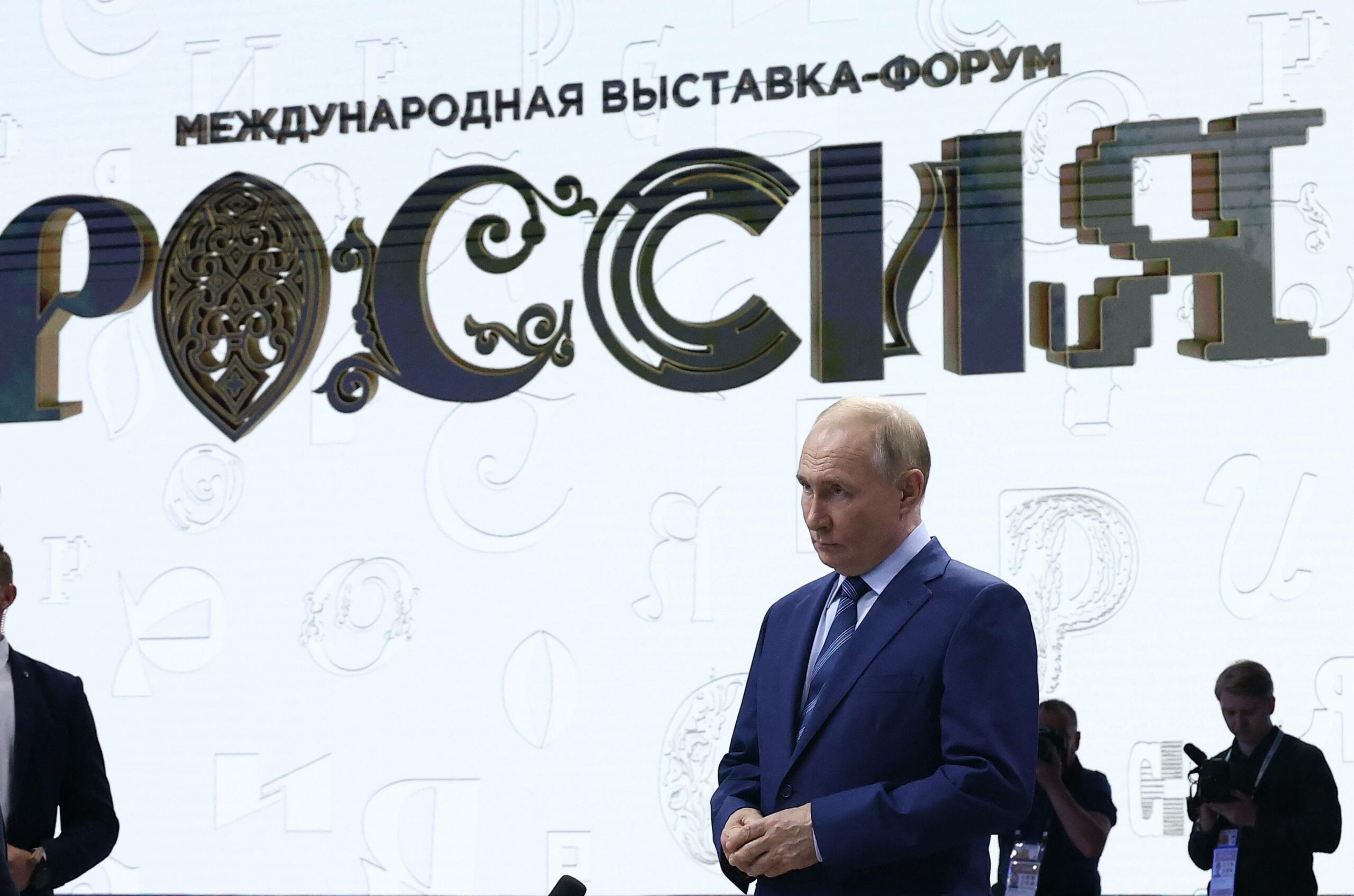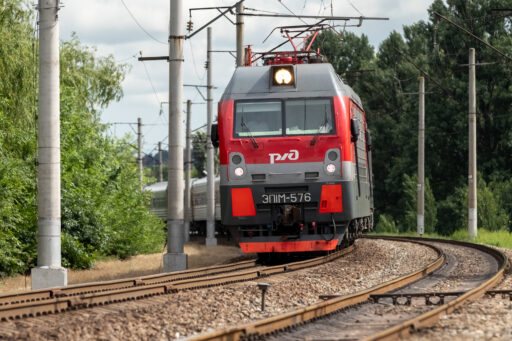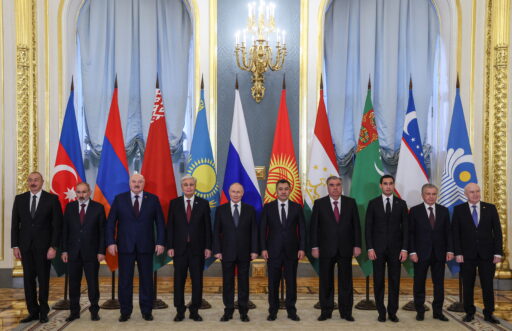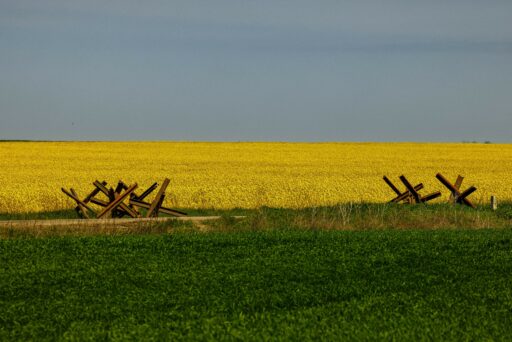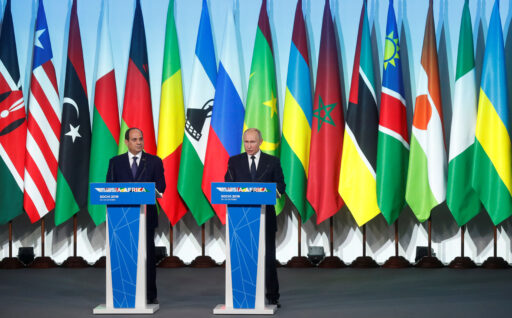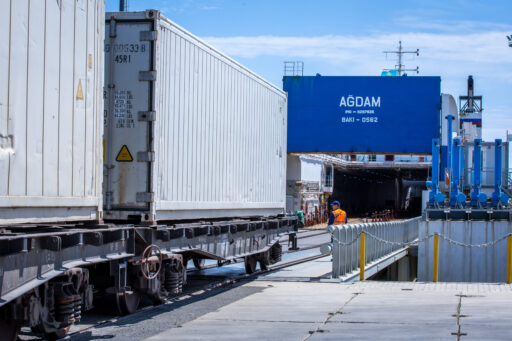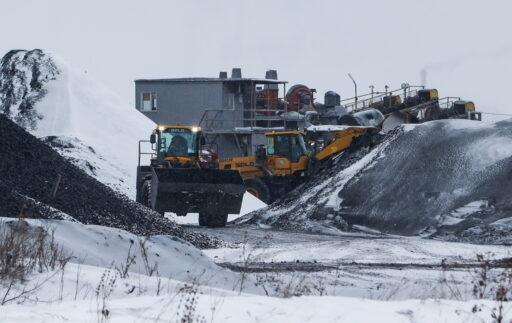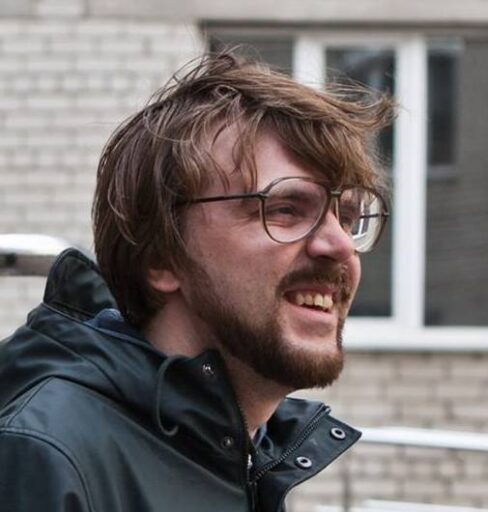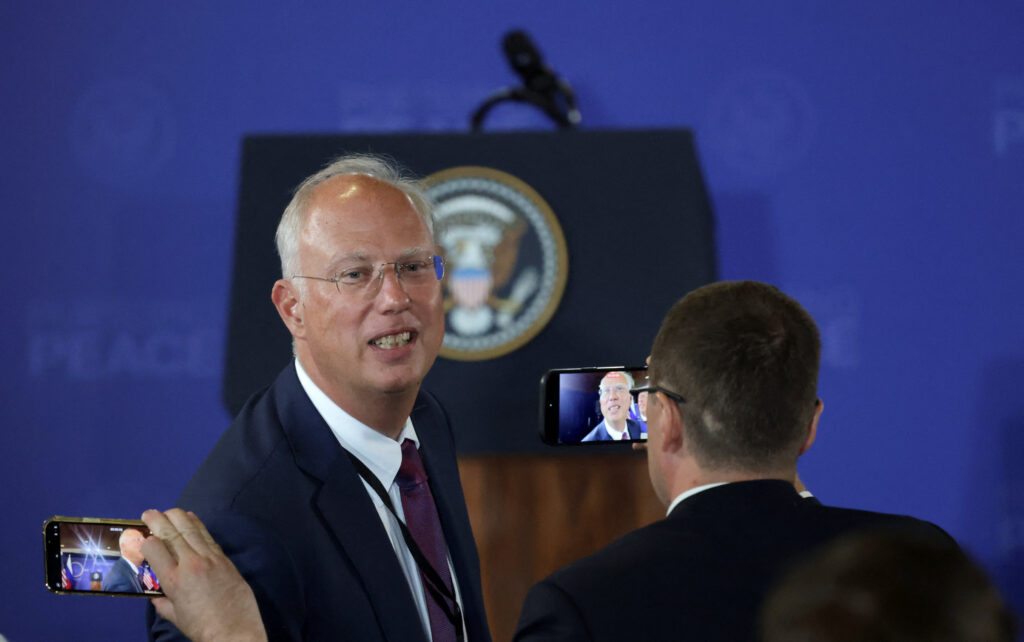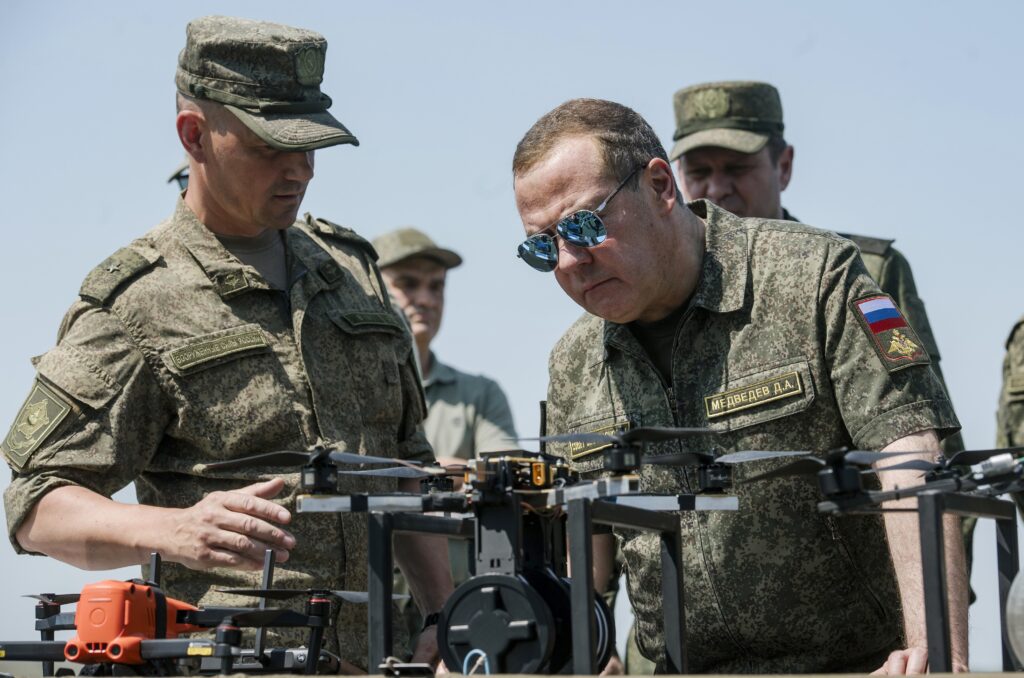In a few months, the national center «Rossiya» will be unveiled in Moscow, which, according to the official line, will preserve the «legacy» of the exhibition of the same name, which demonstrated «the achievements of the Putin era» in the course of his most recent presidential campaign. The new site, which can be called the «Putin Center», will compete with the Yeltsin Center and the VDNKh (the All-Russian Exhibition of Achievements of the National Economy). Its displays, equipped with augmented reality, will constantly show a virtual country where everything and everyone is prospering. In addition, the site will become a plebiscite in support of Putin: the organizers have done their math and expect a record number of visitors. The creation of a constantly operating virtual model of a country that does not exist in reality has become a new milestone in the history of Putinism and the actual formalization of Putin’s personality cult.
The legacy of mature Putinism
In early July, Vladimir Putin brought Indian Prime Minister Narendra Modi to the now officially closed International Exhibition and Forum «Rossiya» housed by the VDNKh. The president also invited the newly appointed ambassadors to visit the exhibition so as to get to know Russia better. Putin himself clearly liked it: he visited it several times, suggested extending its operation for several months, and then ordered the exhibition to be made permanent. New premises to house the «Rossiya» exhibition will be built in the center of Moscow on the territory of «Expocentre», where «the legacy of the Forum» will be preserved (to use the phrasing from Putin’s very decree). The new site will be officially named «Russia National Center», and regional authorities are tasked with creating branches of this center — and when we say «tasked», we mean that this order was reflected in no uncertain terms in Putin’s own decree. The initiative will cost tens of billions of rubles (the cost of the Moscow site alone is 4 billion rubles), and the virtual «Russia» will cost at least hundreds of millions to operate.
Russian officials have long not been shy about praising Putin for his personal involvement in all positive developments in Russia, be it the opening of a new section of expressway, a new workshop at a private enterprise, or a fountain in a small town. The organization of the National Center on the basis of the «Rossiya» exhibition is a yet another step in the construction of his personality cult. It is hardly a coincidence that the organizers of the forum in their speeches and Putin in his decree on the «National Center» use the somewhat awkward phrase: «preserving the heritage of the exhibition». It seems rather absurd: what kind of «heritage» is there when it comes to a temporary propagandistic exhibition? However, if we replace the word «exhibition» in this phrase with the president’s surname, everything falls into place. The Kremlin’s political administrators first suggested that Putin show before the elections the achievements of his era, and then formalize the «heritage» in the form of a national center. So far, the phrase «Putin’s legacy» has not been heard, but this recognition is clearly not far off. Putin’s continued service as head of the country will not be an obstacle: the legacy is already there, and it is growing and multiplying. The president himself, who has long been accustomed to flattery from the mouths of his subordinates and who is quite satisfied with this situation (otherwise thanking Putin would not have become a mandatory ritual for officials), is already ready to be venerated for his «legacy».
Moreover, the word «heritage» is mentioned in the law «On Historical Heritage Centers of Presidents of the Russian Federation who have ceased to exercise their powers». According to this document, all former heads of Russia are entitled to such a center. There are «Yeltsin Centers» in Yekaterinburg and Moscow. Now a huge «Putin Center» will appear in the capital and in every region of the country, and with their size and number these institutions will clearly overwhelm the centers established in honor of Boris Yeltsin. It can be said that in this way Putin is gaining a symbolic victory over his predecessor and emphasizing his own great (er) importance in history. It is symptomatic that the center was not created on the basis of the VDNKh, although many premises on this site are currently empty. The Kremlin does not want to mix Putin’s achievements with a showcase of the former glory of the Soviet era. For Putin and his subordinates, his time in power is a separate page of history, which means that the center’s project must be written from scratch. This arrangement is potentially very lucrative for Russian officials: huge amounts of money can be spent and embezzled on the construction of the center. It is clear, that neither the employees of the political bloc nor the supervisors of the construction complex in the government, headed by one of Putin’s new favorites, Marat Khusnullin, will be left in the lurch.
Putin’s eclecticism
The achievements of Putin’s era look rather dubious, and their representation at the exhibition looks problematic as well. The organizers built a virtual country with virtual regions, each with their own stand or display that show huge statues personifying local rivers, 3D models of animals, virtual or small models of various equipment (often existing only in theory, as potential projects). Regional administrations created a bizarre mix, the displays could attract attention, but what conclusions citizens could draw after their visit is not very clear. The most straightforward and accessible were the exhibition displays dominated by stories about tourist attractions, local cuisine, as well as regional arts and crafts. At least they could attract some number of tourists to the regions. Other exhibition venues were entirely in the virtual world and served as a background for strange photos.
If we judge Russia by the exhibition, the main achievements of the Putin era and its most important legacy were the construction of augmented reality screens and VR glasses, as well as the mass use of neural networks. Indeed, the displays strongly resemble the images and clips generated by neural networks, albeit with regional refinements, with the keyword «Russia» as a prompt.
Initially, the regions were supposed to demonstrate how many schools, hospitals and roads have been built and how many will be built in the nearest future. However, it seems that both regional and Kremlin officials found this task boring and dull, whereas building the augmented reality was much more fun. Most importantly, the president liked this reality: it was hardly different from the Russian settlements and enterprises that are beautified and «augmented» in preparation for his official visits.
From an ideological point of view, virtualization looks rather strange and meaningless. The Yeltsin Center reflects the ideology of the 1990s. Of course, the figure of the former head of state is presented in a positive way, but the exposition clearly shows what Yeltsin wanted to rid the country of, how he went about it, and what difficulties he encountered during his time in office (although these difficulties are very much downplayed). Visitors of the new «Putin Center», on the other hand, will see a super-eclectic set of differently styled booths and the absence of any ideology: in other words, everything they have already seen at the «Rossiya» exhibition. But this eclecticism will in fact accurately reflect the quasi-ideology of the Putin era. There is no single idea that unites the country, and even the war against Ukraine has failed to become such a unifying idea. At the exhibition stands, militaristic and patriotic overtones were juxtaposed with food tastings and hotel presentations, and these images did not form a coherent picture of reality. This virtual country is a hodgepodge of pro-Kremlin celebrity appearances, United Russia party congresses, events of pro-Kremlin organizations and movements, and military award ceremonies. An aging president would like to see all this in his country, and the exhibition organizers have supplied him with just this very image to have in front of his eyes.
Ersatz plebiscite
A permanently functioning exhibition center will solve another problem for the Kremlin’s political bloc. Putin wants to see ouvert manifestations of popular love and support that translate into record percentages in elections and referendums. To please the president, his administration held a vote on constitutional amendments at the height of the covida pandemic, even though it was not required by law and had no impact or significance, and carried very real public health risks. But in their eyes it was all very much worth it since it enabled Putin to see very nice numbers indeed: the amendments were supposedly supported by 77.9% of citizens, and the official turnout was 67.7%. In the 2024 presidential election, the political bloc set a new record: according to the Central Election Commission, 87.3% of Russians voted «for» Putin, with a turnout of 77.5%. It will be two years before the next display of public affection, the elections to the State Duma, takes place. The National Center has become a kind of ersatz plebiscite. It is not a coincidence that the organizers of the exhibition «Rossiya» constantly emphasized new records for the number of visitors, and Putin was happy to mention them in his talks.
According to the latest data, the Exhibition and Forum «Rossiya» was visited by 18.5 million people or one seventh of the Russian population. Most likely, the same attendance data will be published about the new National Center. Its attendance will become a permanent plebiscite on trust in the president and his policy. The power vertical has always been quite adept at providing a steady stream of public servants dependent on the authorities as the most dependable visitors: schoolchildren and public servants from the regions were brought in busloads to visit the exhibition. A visit to the Center can also become one of the obligatory destinations of a trip to Moscow on vouchers, which are partially or fully paid from the state budget. In Soviet times, the same means were used to ensure attendance at the VDNKh and queues at Lenin’s mausoleum. At the same time, the data on the Putin Center’s attendance can be embellished quite painlessly: it is unlikely that inflated data in these reports about millions of visitors will provoke a fierce protest among the population. Eventually, it will turn out that every Russian has been introduced to the «heritage» and new achievements of the Putin era, and has attended it at least once, or even even several times.
Most likely, the new National Center — as the main patriotic platform — will become the main venue for the main pro-government events: congresses, award ceremonies, forums and round tables, and regional presentations. Putin himself will be a guest at many of them. Even without all this, the Center created on the basis of the election-time exhibition means that the presidential campaign of the Russian head of state will become eternal. Putin will forever appear to citizens as a good magician, thanks to whom Russia achieves all its successes, which are reflected on the exhibit displays (however virtual they both are).
The construction of the «Putin Center», which will serve both as an ersatz Russia for the president and the citizens of the country, and as an ersatz plebiscite with new records of public support for Putin, which do not lend themselves to real calculations, is a new stage in the construction of the cult of personality in the Russian Federation. Putin’s «legacy», the dependence of all positive processes in the country on him and him alone, is now officially established and formalized. Loyal citizens were already offered a chance to express their loyalty at the pre-election exhibition, and soon they will have to express it constantly by visiting the «Putin Center» and its new events again and again.
